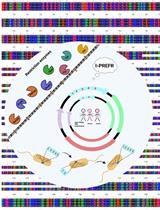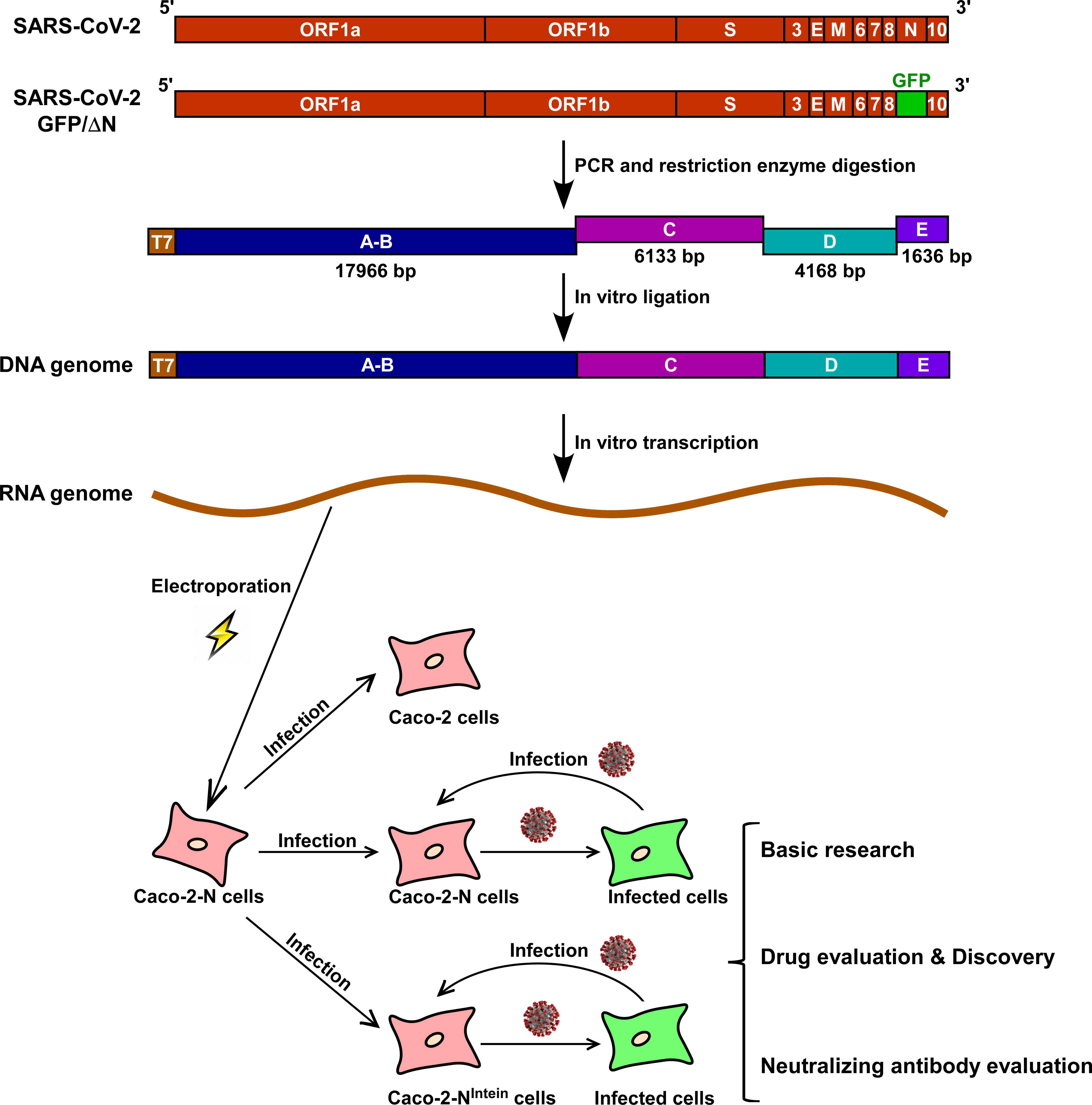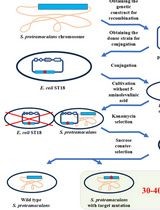- EN - English
- CN - 中文
A Nucleocapsid-based Transcomplementation Cell Culture System of SARS-CoV-2 to Recapitulate the Complete Viral Life Cycle
基于核衣壳的 SARS-CoV-2 转互补细胞培养系统,重现完整的病毒生命周期
发布: 2021年11月05日第11卷第21期 DOI: 10.21769/BioProtoc.4257 浏览次数: 4368
评审: David PaulMirko CorteseChhuttan L MeenaAnonymous reviewer(s)

相关实验方案

I-PREFR:基于反向PCR的无酶单向策略,利用自杀载体在细菌中快速实现无标记染色体基因缺失与重建
Rekha Rana [...] Prabhu B. Patil
2025年05月20日 2239 阅读
Abstract
The ongoing COVID-19 pandemic is caused by severe acute respiratory syndrome coronavirus 2 (SARS-CoV-2). As this virus is classified as a biosafety level-3 (BSL-3) agent, the development of countermeasures and basic research methods is logistically difficult. Recently, using reverse genetics, we developed a BSL-2 cell culture system for production of transcription- and replication-component virus-like-particles (trVLPs) by genetic transcomplementation. The system consists of two parts: SARS-CoV-2 GFP/ΔN genomic RNA, in which the nucleocapsid (N) gene, a critical gene for virion packaging, is replaced by a GFP reporter gene; and a packaging cell line for ectopic expression of N (Caco-2-N). The complete viral life cycle can be recapitulated and confined to Caco-2-N cells, with GFP positivity serving as a surrogate readout for viral infection. In addition, we utilized an intein-mediated protein splicing technique to split the N gene into two independent vectors and generated the Caco-2-Nintein cells as a packaging cell line to further enhance the security of this cell culture model. Altogether, this system provides for a safe and convenient method to produce trVLPs in BSL-2 laboratories. These trVLPs can be modified to incorporate desired mutations, permitting high-throughput screening of antiviral compounds and evaluation of neutralizing antibodies. This protocol describes the details of the trVLP cell culture model to make SARS-CoV-2 research more readily accessible.
Keywords: SARS-CoV-2 (SARS-CoV-2)Background
The COVID-19 pandemic caused by SARS-CoV-2 still rages around the world, threatening public health and the global economy (Wang et al., 2020). Several reverse genetic systems have been reported for generating SARS-CoV-2 replicons and recombinant virus for basic virology research and antiviral development (Hou et al., 2020; Xie et al., 2020; Zhang et al., 2021a and 2021b). However, as SARS-CoV-2 is classified as BSL-3 pathogen, experiments involving authentic virus are restricted to BSL-3 laboratories, which hinders basic research and antiviral discovery. Pseudotyped virus and replicon systems of SARS-CoV-2 that can be used in BSL-2 laboratories have been developed but are limited to studying viral entry and replication, respectively (Nie et al., 2020; Zhang et al., 2021b). Therefore, a cell culture model for SARS-CoV-2 that could safely recapitulate the entire viral life cycle in a BSL-2 facility is urgently needed (Rome and Avorn, 2020).
Recently, we developed such a system in which transcription- and replication-component SARS-CoV-2 virus-like particles (SARS-CoV-2 trVLPs) can be generated (Ju et al., 2021). We replaced the N gene in the SARS-CoV-2 genome with a GFP reporter gene and then provided N in trans in Caco-2 cells ectopically expressing this gene (Caco-2-N). Transducing the Caco-2-N cells with the SARS-CoV-2 GFP/ΔN genome thus allows for the production of trVLPs, which can complete the entire life cycle exclusively in the Caco-2-N packaging cells. In normal cells, these trVLPs can only complete a single-round infection as the packaged viral genome lacks the N gene, which is critical for viral particle assembly. Thus, this system can be safely utilized in BSL-2 level laboratories for SARS-CoV-2 research. In addition, the GFP reporter provides a convenient surrogate readout for virus infection, which facilitates the use of this system for neutralizing antibody determination and high-throughput antiviral screening.
Genetic manipulation of this SARS-CoV-2 trVLPs system is not trivial due to the large size of the viral genome (~30 kb) and presence of multiple toxic elements (Almazan et al., 2014; Xie et al., 2021). Herein, we describe technical details of our cell culture system for production of trVLPs. Overall, the engineering process includes three parts: packaging cell line construction, viral genome-length RNA preparation, and trVLP recovery. Using lentiviral transduction, SARS-CoV-2 N protein can be stably expressed in Caco-2 cells to generate the packaging cell line necessary for trVLP production. Besides, an intein-mediated protein trans-splicing approach (Stevens et al., 2017) was utilized to minimize the chance of N gene recombination into the genome of trVLP. The genome-length viral RNA is prepared by in vitro transcription of a full-length cDNA template generated by in vitro ligation. Briefly, four fragments (A-B, C, D, and E) were designed to cover the entire genome of SARS-CoV-2 GFP/ΔN. Each fragment can be chemically synthesized and then amplified using PCR (Figure 1). After PCR amplification, the fragments, which are flanked by a type IIS restriction enzyme recognition site (BsaI), are digested and then ligated in vitro to assemble the full-length cDNA of the viral genome. As type IIS restriction enzymes recognize asymmetric DNA sequences and cleave at a defined distance outside of their recognition sequence, the fragments are unidirectionally assembled into the full-length cDNA. A T7 promoter and a poly(A) tail were engineered upstream of fragment A and downstream of fragment E, respectively, ultimately allowing for in vitro transcription to produce capped, polyadenylated viral RNA. This genome-length RNA can then be electroporated into the Caco-2-N packaging cell line and trVLPs subsequently collected from the supernatant. Then the trVLPs are amplified and titrated using a tissue-culture infectious dose 50% (TCID50) endpoint dilution assay following the Reed & Muench method (Lindenbach, 2009), and GFP expression is the proxy of trVLP infection. SARS-CoV-2 trVLP can be used for evaluating antivirals and neutralizing antibodies.

Figure 1. Overview of production of SARS-CoV-2 GFP/ΔN trVLPs. The N gene of SARS-CoV-2 was replaced with the GFP gene, and the cDNA genome divided into four fragments designated as A-B, C, D, and E. Each of these fragments was chemically synthesized and then PCR amplified and assembled by restriction enzyme digestion and in vitro ligation to create the full-length cDNA. The full-length RNA genome was generated by in vitro transcription of the full-length cDNA. This RNA genome can then be electroporated into the packaging cell line, Caco-2-N, to produce trVLPs. At 24 h post electroporation, the supernatant of electroporated cells is collected and can be used to inoculate Caco-2, Caco-2-N, or Caco-2-NIntein cells. trVLPs can infect and replicate in Caco-2-N or Caco-2-NIntein cells and can be secreted into the supernatant. However, trVLPs only complete a single-round infection in Caco-2 cells due to the absence of viral N protein.
Materials and Reagents
Materials
Electroporation cuvettes, 4-mm gap (Bio-Rad, catalog number: 1652088)
24-well plate (Thermo Fisher Scientific, catalog number: 142475)
96-well plate (Thermo Fisher Scientific, catalog number: 167008)
0.2-ml PCR tubes (Thermo Fisher Scientific, catalog number: N8010580)
1.5-ml tube (Corning, catalog number: MCT-150-C)
15-ml tube (Thermo Fisher Scientific, catalog number: 339650)
10-cm dish (Thermo Fisher Scientific, catalog number: 150466)
Cells
Caco-2 cells (ATCC, catalog number: HTB-37)
293T cells (ATCC, catalog number: CRL-3216)
Stbl3 competent cells (AlpaLife, catalog number: KTSM110L)
EPI300 competent cells (Lucigen, catalog number: C300C105)
Reagents
Dulbecco’s Modified Eagle Medium (DMEM; Gibco, catalog number: C11965500BT)
0.25% Trypsin-EDTA (Thermo Fisher Scientific, catalog number: 25200072)
Fetal bovine serum (BIOVISTECH, catalog number: SE100-011)
Penicillin/streptomycin, 10,000 U/ml (Thermo Fisher Scientific, catalog number: 15140122)
DNA transfection reagent Vigofect (Vigorous, catalog number: T001)
pMD2G (Addgene, catalog number: 12259)
psPAX2 (Addgene, catalog number: 12260)
Opti-MEMTM (Gibco, catalog number: 31985070)
5 kb DNA marker (Takara, catalog number: 3428A)
15 kb DNA marker (Takara, catalog number: 3582A)
PrimeSTAR® Max DNA Polymerase (Takara, catalog number: R045)
PrimeSTAR® GXL DNA Polymerase (Takara, catalog number: R050)
Restriction enzyme BsaI (NEB, catalog number: R0535L)
T4 DNA Ligase (NEB, catalog number: M0202L)
mMESSAGE mMACHINETM T7 transcription kit (Thermo Fisher Scientific, catalog number: AM1344)
E.Z.N.A® Plasmid DNA Mini Kit I (Omega, catalog number: D6943-02)
E.Z.N.A® Gel Extraction Kit (Omega, catalog number: D2500-02)
Phenol:chloroform:isoamyl alcohol 25:24:1 (pH 7.8; Solarbio, catalog number: P1012)
ReverTra Ace® qPCR RT Kit (Toyobo, FSQ-101)
TRIzolTM Reagent (Thermo Fisher Scientific, catalog number: 15596018)
CopyControlTM Induction Solution (Lucigen, catalog number: CCIS125)
Polybrene (Sigma, catalog number: TR-1003-G)
Dulbecco's Phosphate-Buffered Saline (PBS; Corning, catalog number: 21-031-CVR)
Equipment
Water bath (zhybioresources, catalog number: SYG-1210 )
Centrifuge (Eppendorf, catalog number: 5406000291)
Blue Light Gel Imager (Sangon Biotech, catalog number: G500312)
NanoDropTM One/Onec (Thermo Fisher Scientific, catalog number: 701-058108)
Gene Pulser Xcell Total Electroporation System (Bio-Rad, catalog number: 1652660)
Incubator shaker (Changzhou Huayi, catalog number: THZ-D)
Procedure
文章信息
版权信息
© 2021 The Authors; exclusive licensee Bio-protocol LLC.
如何引用
Yu, Y., Ju, X. and Ding, Q. (2021). A Nucleocapsid-based Transcomplementation Cell Culture System of SARS-CoV-2 to Recapitulate the Complete Viral Life Cycle. Bio-protocol 11(21): e4257. DOI: 10.21769/BioProtoc.4257.
分类
分子生物学 > DNA > 染色体工程
微生物学 > 微生物遗传学 > 重组
环境生物学 > 病毒
您对这篇实验方法有问题吗?
在此处发布您的问题,我们将邀请本文作者来回答。同时,我们会将您的问题发布到Bio-protocol Exchange,以便寻求社区成员的帮助。
Share
Bluesky
X
Copy link











